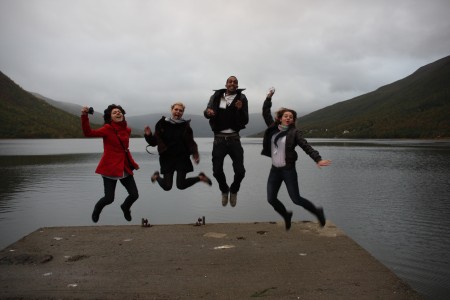Prior to the observation project participants received extensive training from prominent Belarusian, Lithuanian and Norwegian experts on election observation. Before the “great day” of the elections, they split into groups of 4-5 and departed to their final destinations in Oslo, Bergen, Tromsø, and Trondheim counties.
All in all, the group visited 94 polling stations.
An observer from Lithuania Vytautas Ulozas who was lucky to go for observation to the furthest northern city of Tromsø, shared his impressions in his own blog: “We were met by a very friendly Election Commission’s chairman who told us everything about the process, answered a lot of questions and guided around the premises. To tell the truth, Norway is a bad place for election “witch-hunters” (those who want to find some drawbacks to cavil at). You can hardly imagine how nearly perfectly organised it all was. Every member of the commission knew very well how to act <...>. The observation was a way less complicated, tiresome and nervous”. 
Another thing Vytautas liked was a technical equipment available: “There were even 3 particular voting scanners capable of processing around 7000 sheets per hour. They <...> made the process really quick. The counting was also observed by a local journalist. He photographed and interviewed us, and in the meanwhile the scanners finished counting and screened the data on the vote shares among parties”.
Improvements still needed
However, Norway is not an exception in terms of failing to comply with some international standards of elections. According to the official press-release of the mission (full version in “Documents” section, right), though “the organization of election was very professional”, yet some procedural improvements are needed, as “cultural tradition of trust prevailed over the international standards”. Identification of voters without any legal documents, which was particularly criticised by the participants during the mission in Lithuania in May, also had place in Norway.
Apart from the actual observation on election day, observers visited Stortinget (Parliament) and election stands as well as some of the cultural attractions. Some were also been invited to the Royal Norwegian Ministry of Foreign Affairs to talk about the findings.
Some of the group have also visited Human Rights House in Oslo to get to know more about its activity. The observers got to know general information regarding the activity of HRH in Oslo, shared their experiences from participation in different projects held at HRH in Vilnius and talked about election observation related issues.
In total, SILC Election Observation Mission consisted of 44 observers from 3 countries, including 29 Belarusian, 7 Lithuanian and 8 Swedish representatives.
The combination of different cultures is another specific feature of the project aiming at promoting cultural variety. As the Belarusian coordinator of the project Anastasiya Matchenko noted, “one of the unique things about the project and mission is the spirit that makes people feel united.”
She also shared about the significance of the monitoring: “My strong feeling is that the observation is not only a great tool to monitor democratic processes and objectively evaluate it. It can also make one to look at election in a completely different way. After having participated in the mission, overall understanding of election procedures change – it is not just a cross in front of a name or cast of a ballot in the ballot box, but something more interesting”.
The Mission was organized within the project “Election Observation: Theory and Practice”, implemented in partnership by four organizations: the United Centre of Initiatives for Belarus (JuBIC), Swedish International Liberal Centre (SILC), European Humanities University (EHU) and Belarusian Human Rights House in Vilnius (HRH). The aim of the project is to teach election observation from practical and theoretical prospective.
Previous project missions observed elections in Norway (September 2007), Georgia (May 2008) and Lithuania (October 2008, May 2009).
Documents:


